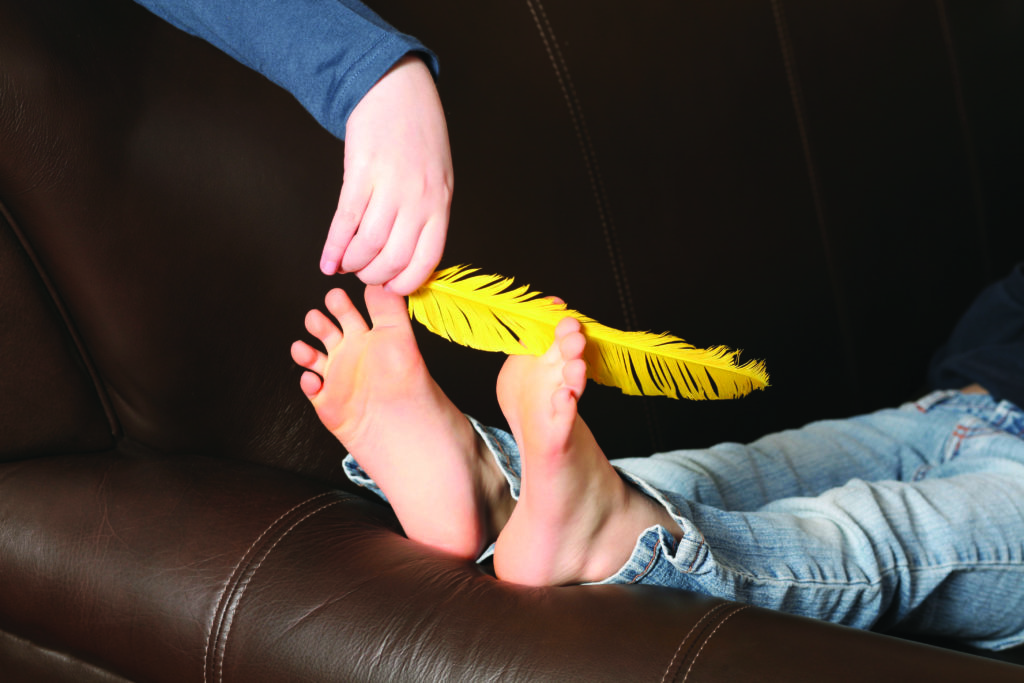Why does tickling makes us laugh?
by Scott Dutfield · 20/01/2020

Image credit: Getty
How this strange reaction is a human evolution that kept our species safe
Beneath your skin are millions and millions of nerve endings – branched arrangements of white-coloured cells that send signals to your brain. They’re telling your brain that the label of your jumper is digging into your back and that the paper between your fingertips feels smooth. When these nerves are touched lightly they stimulate two regions of the brain: the somatosensory cortex, which analyses the sensation, and the anterior cingulated cortex, which processes pleasant feelings.
If someone brushes a feather against your skin, both of these areas of the brain burst into action and you experience the feeling of tickling. This experience makes us laugh, but not because we find it funny. It appears that what we’re actually doing is showing that we are not a threat to the aggressor (in this example, the person with the feather). Think about the places on your body that are most ticklish – usually it’s the neck, armpits and feet.
Humans are a social species who live in groups so they are able to pass knowledge from one generation to another and across individuals. When our ancestors engaged in tickling the aggressor was teaching the other person how to defend themself. If you imagine someone coming to tickle you on your sides, you would probably clamp your arms down to protect yourself. Evolutionary biologists expect that tickling is a form of harmless attack on others in our social group. Making another laugh involuntarily is a display of dominance.
Why are some people more ticklish than others?
For some people tickling is funny, for others it’s painful or unpleasant, while some people are not ticklish at all. Scientists are unsure why people experience the sensation differently but expect it may be a result of genetics making some people’s skin more sensitive. They do know that you are more likely to be ticklish if the tickling catches you by surprise or if it is a close friend doing the tickling. In 2016, a study in rats revealed that anxiety made them less responsive to tickling, which might also be true in humans.
Why can’t you tickle yourself?
Try tickling yourself. Aim for somewhere you know you are usually quite ticklish, like the back of the neck. You won’t get the same response of laughter as if someone else had tickled you. When neurologists have compared fMRI scans of people who are being tickled to others trying to tickle themselves they have seen a marked difference in the activity of the tickle regions. The response in the somatosensory cortex and anterior cingulated cortex is dulled when people try to tickle themselves. Studies at University College London have demonstrated that the cerebellum, a part of the brain which monitors movements, can predict your own movement. So it uses this prediction to cancel the familiar response of the brain’s other tickle regions to the tickle. As a result, we remain calm rather than experience the laughter in response to being tickled.

Image credit: Getty
This article was originally published in How It Works issue 121, written by Charlie Evans
For more science and technology articles, pick up the latest copy of How It Works from all good retailers or from our website now. If you have a tablet or smartphone, you can also download the digital version onto your iOS or Android device. To make sure you never miss an issue of How It Works magazine, subscribe today!




